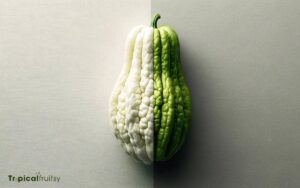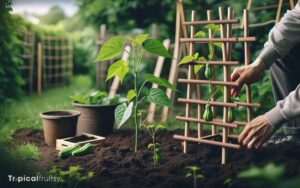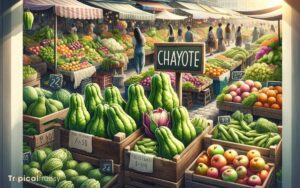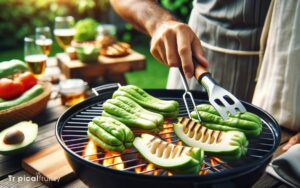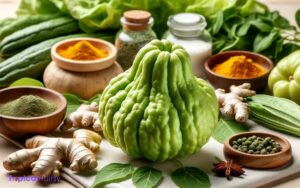How to Make Chayote Pickles? 5 Easy Steps!
Creating chayote pickles is a delightful way to preserve this unique vegetable. By following a simple recipe, you can enjoy the crisp and tangy taste of pickled chayote as a condiment or side dish.
Pickling chayote involves selecting quality vegetables, preparing a vinegar-based brine, and ensuring proper canning techniques.
The key steps include:
Enjoy the zesty addition of homemade chayote pickles to your meals with this easy-to-follow pickling process.
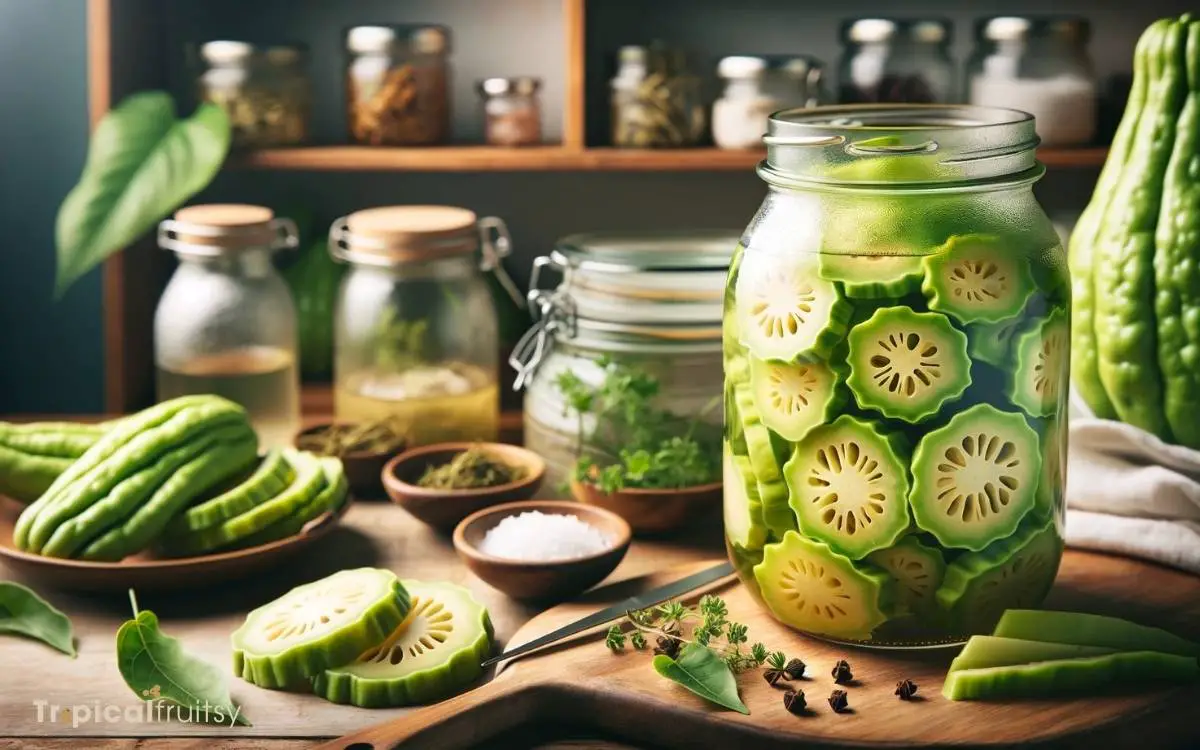
Key Takeaway
Step 1: Selecting the Perfect Chayotes
Although chayotes are available year-round, opt for firm, unblemished fruits with a light green color when selecting the best quality for pickling.
The tactile firmness indicates freshness and ensures that the chayote will withstand the pickling process without becoming mushy.
Avoid chayotes with brown spots or wrinkled skins, as these are signs of age or improper storage, which can negatively impact both flavor and texture.
A uniform light green color without any large pits or grooves will not only contribute to the visual appeal of your pickles but also to a consistent pickling result.
With the right chayote in hand, the stage is set for crafting a crisp and flavorful preserve. Now, let us transition to the meticulous process of preparing your ingredients for pickling.
Step 2: Preparing Your Ingredients
One must thoroughly wash and slice the chayote into consistent pieces to ensure even pickling. This meticulous preparation is essential for achieving the perfect texture and flavor.
Select a sharp knife and a stable cutting board to avoid any uneven cuts that could affect the pickling process.
Now, let’s focus on the key ingredients that will accompany the chayote in its transformation:
- Fresh garlic cloves and dill, to infuse the brine with a piquant and aromatic essence.
- Crisp peppercorns and mustard seeds, to add layers of complexity to each bite.
- A dash of chili flakes, for those who crave a subtle yet thrilling heat.
Step 3: Mixing the Pickling Brine
How does one create the ideal pickling brine to complement the freshly prepared chayote and selected spices?
The art of pickling brine lies in the delicate balance of acidity, sweetness, and spice, which works to not only preserve the chayote but also to enhance its natural flavors.
Expertise-driven craftmanship dictates the precise combination of high-quality vinegar, pure water, and fresh, non-iodized salt.
The addition of sugar balances the acidity, while an array of spices introduces a complexity that can elevate the humble chayote to a gourmet level.
| Ingredient | Sensation | Emotion |
|---|---|---|
| Vinegar | Sharpness | Nostalgia for old traditions |
| Sugar | Sweetness | Comforting warmth |
| Spices | Aromatic zest | Exhilarating adventure |
Innovative picklers may experiment with different types of vinegar or sugar, and the spice blend can be tailored to evoke specific regional flavors or personal memories, ensuring each jar is not just a condiment, but a storyteller.
Step 4: Packing Jars With Chayote
Having prepared the pickling brine, the next step involves meticulously packing the sliced chayote into sterilized jars, ensuring even distribution for optimal flavor infusion.
This stage is crucial as it directly influences the quality and taste of your pickled chayote.
To achieve perfection, consider the following with care:
- Layer the chayote slices uniformly, allowing the brine to permeate each piece thoroughly.
- Leave adequate headspace at the top of the jar to accommodate brine expansion and to prevent overflow during the sealing process.
- Gently tap the jars to release any trapped air bubbles, securing the integrity and longevity of your pickles.
These steps, executed with precision, promise to captivate the palates of those who partake in your homemade chayote pickles.
Step 5: Processing and Storing Pickles
Once your jars are securely packed with chayote slices and pickling brine, the next imperative step is to process them in a boiling water bath to ensure their preservation and safety.
This method, known as water bath canning, involves submerging filled jars in boiling water for a specific duration, which varies based on jar size and the altitude at which you are canning.
Doing so eliminates harmful bacteria and creates a hermetic seal that prevents spoilage.
Upon completion of the water bath, carefully remove the jars using canning tongs and let them cool undisturbed on a towel for 12 to 24 hours.
Check the seals, label with the date, and store in a cool, dark place. Properly processed pickles can be enjoyed for up to a year.
Conclusion
In the culinary tapestry, chayote pickles emerge as a vibrant thread, intertwining tradition with a twist.
When meticulously selected, prepared, and preserved, these pickles not only embody a crisp texture and a harmonious blend of flavors but also serve as a testament to the art of pickling.
The fusion of ingredients in the brine and the precision in processing ensures a gourmet addition to any table, inviting a renaissance of the humble chayote.

